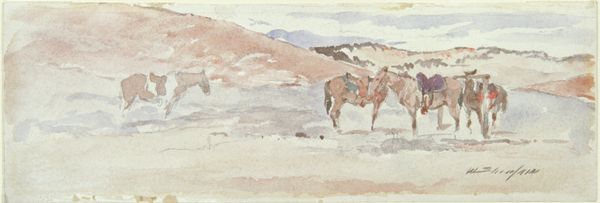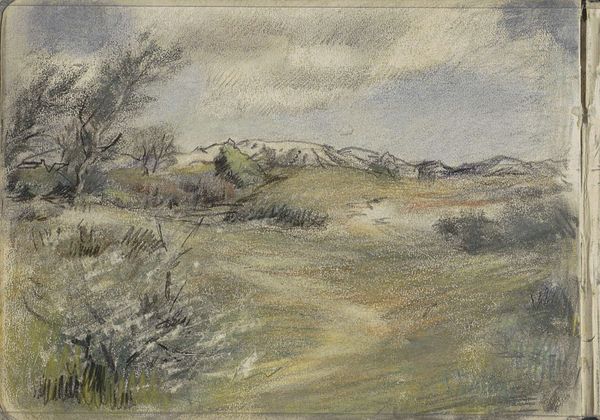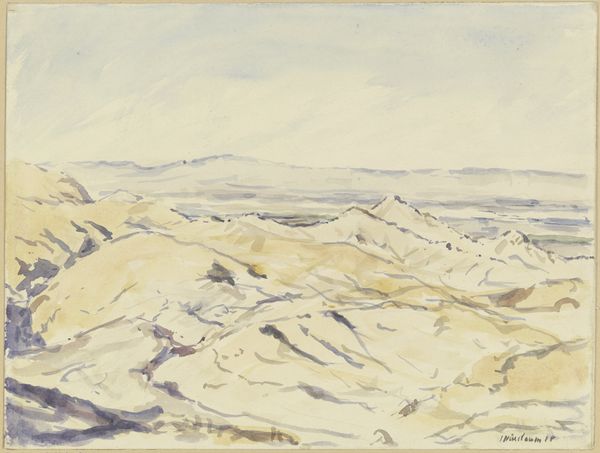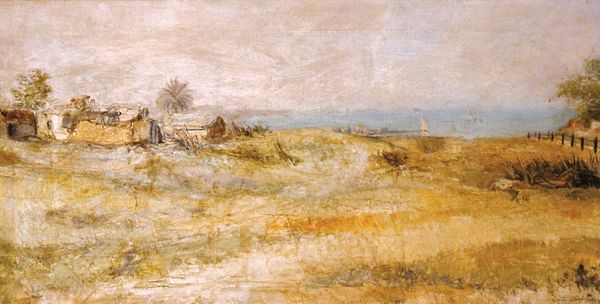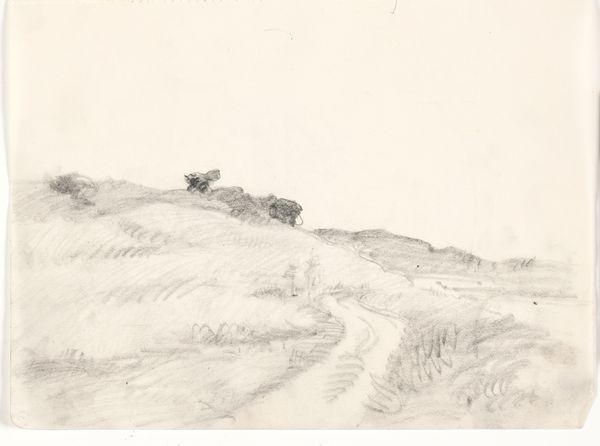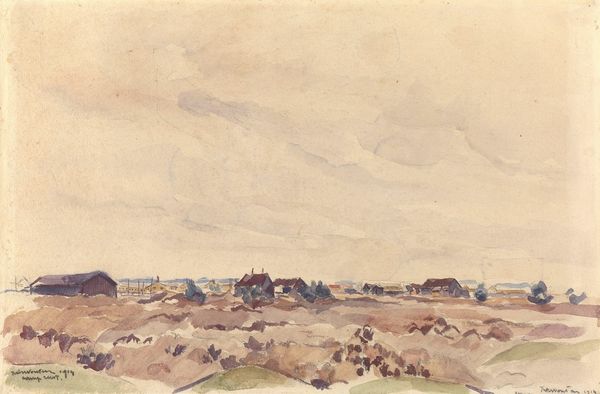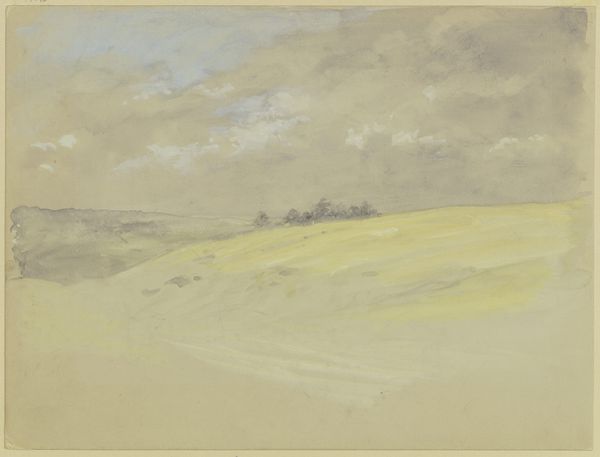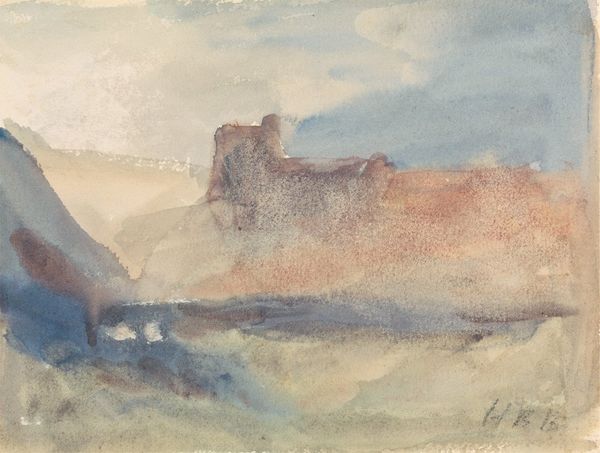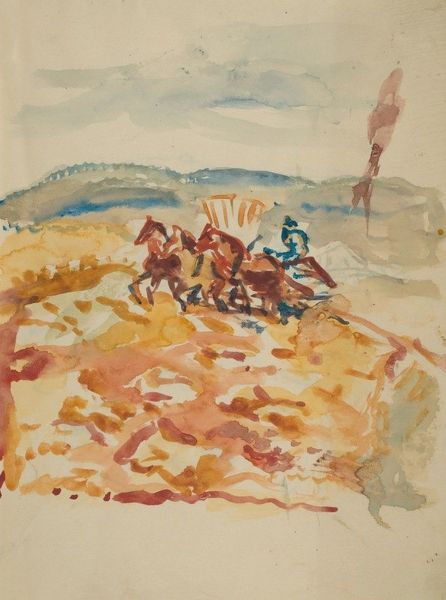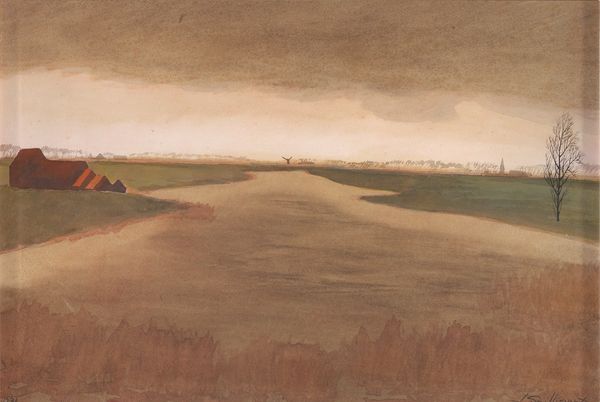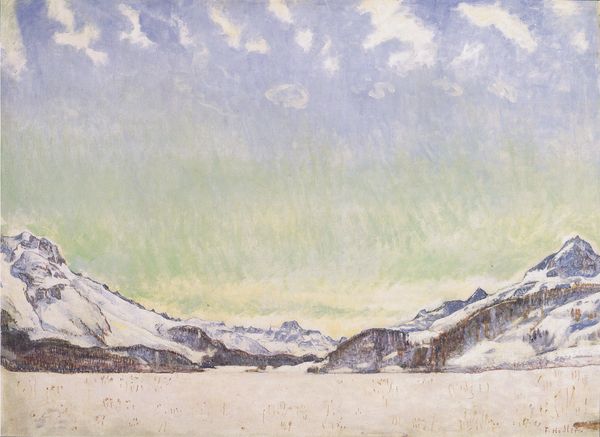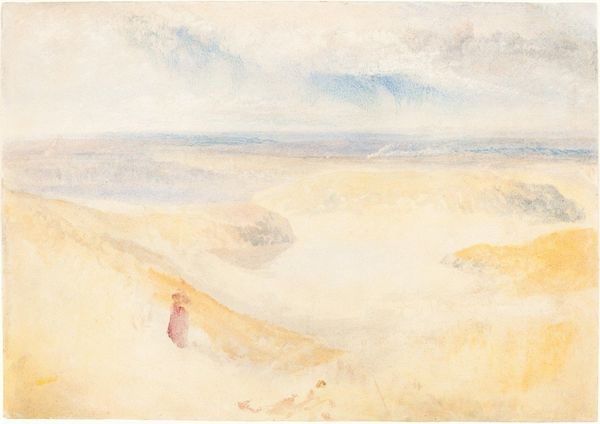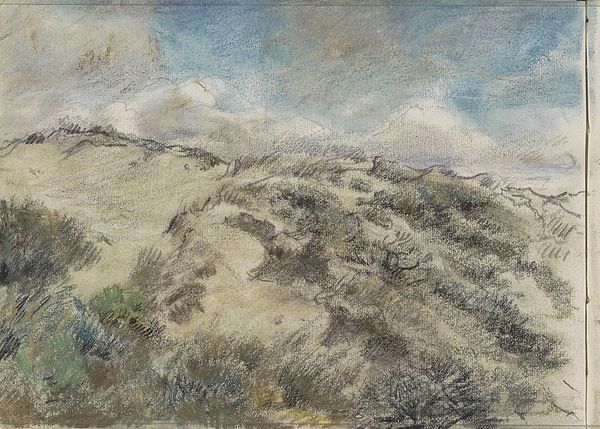
Dimensions: 7 x 9 1/4 in. (17.78 x 23.5 cm)
Copyright: Public Domain
Editor: Here we have Walter Shirlaw’s “Western Landscape,” likely from the late 19th century. It's a beautiful watercolor and graphite drawing, and the colors feel so light and airy. There's a definite feeling of tranquility... How do you interpret this work? Curator: The quiet mood is interesting, isn’t it? The symbolic weight rests in the broad openness, calling to the promise, and also the uncertainty, of westward expansion in the American psyche at the time. The figure almost melts into the scene, a part of, and also dwarfed by the vista. Editor: That makes a lot of sense. I hadn't really considered the "Western" context that deeply, beyond just thinking about it as a landscape. It's interesting you pick up on that relationship with the figure and landscape – the balance between those things. Curator: Consider how often similar depictions present a "conquering" figure – the bold frontiersman planting a flag. Here, that is almost completely absent. Is that absence telling? What symbols might replace that bravado, here? Editor: I guess, instead of conquering, this figure is just...existing? It seems more about harmony than domination. It's almost like they are a mediator between the land and us, the viewers. Curator: Precisely! How does that connection influence your understanding of the visual language being employed, the techniques used? Editor: It reframes everything. I was seeing it just as a pretty scene, but understanding those deeper symbols—especially about westward expansion—adds so much more complexity and cultural relevance to it. Thank you. Curator: My pleasure. There are so many stories embedded in seemingly simple images!
Comments
No comments
Be the first to comment and join the conversation on the ultimate creative platform.
